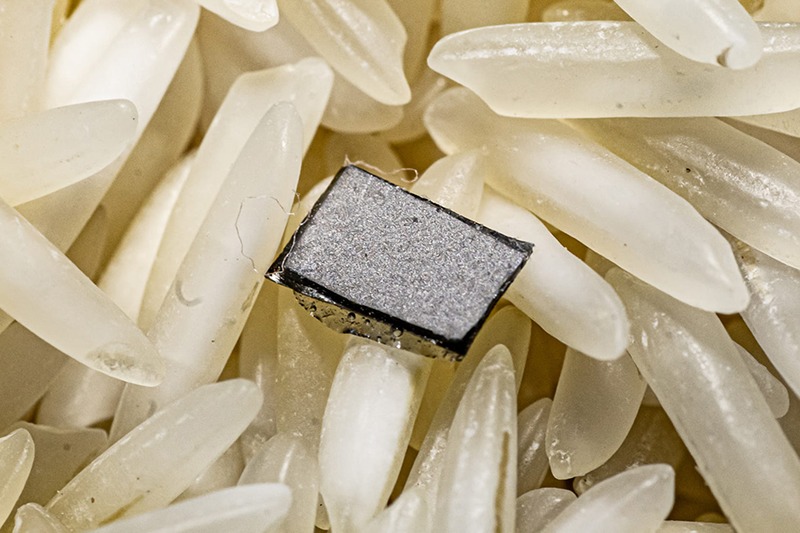Neural stimulation therapy or Neurostimulation involves the purposeful modulation of the nervous system’s activity using invasive or non-invasive means. This technology can improve the lives of those who are severely paralyzed or suffering from profound losses to various sense organs, as well as for permanent reduction of severe, chronic pain which would otherwise require constant, high-dose opioid therapy. The key to making neural stimulation therapy more widely available is creating battery-free, wireless devices that are small enough to be implanted without major surgery.
A team of researchers at Rice University have developed an implantable neural stimulator that is both wireless and is powered by an external magnetic field. The tiny device, about the size of a grain of rice, could be used as part of a system to treat a range of diseases and conditions such as Parkinson’s disease, epilepsy, and chronic pain. The device could be implanted almost anywhere in the body with a minimally invasive procedure similar to the one used to place stents in blocked arteries.
The implant’s key ingredient is a thin film of “magnetoelectric” material that converts magnetic energy directly into an electrical voltage. The method avoids the drawbacks of radio waves, ultrasound, light and even magnetic coils, all of which have been proposed for powering tiny wireless implants and have been shown to suffer from interference with living tissue or produce harmful amounts of heat, reports Rice University.

“Doing that proof-of-principle demonstration is really important because it’s a huge technological leap to go from a benchtop demonstration to something that might be actually useful for treating people,” said Jacob Robinson, the corresponding author of the study and a member of the Rice Neuroengineering Initiative. “Our results suggest that using magnetoelectric materials for wireless power delivery is more than a novel idea. These materials are excellent candidates for clinical-grade, wireless bioelectronics.”
To demonstrate the viability of the magnetoelectric technology, the researchers showed the implants worked in rodents that were fully awake and free to roam about their enclosures.
Amanda Singer, an applied physics student in Robinson’s lab, solved the wireless power problem by joining layers of two very different materials in a single film. The first layer, a magnetostrictive foil of iron, boron, silicon and carbon, vibrates at a molecular level when it’s placed in a magnetic field. The second, a piezoelectric crystal, converts mechanical stress directly into an electric voltage.
Read more NeoRhythm – Neurostimulation Headband that Hacks Your Brain to Remove Stress and Fatigue
Robinson said the magnetoelectric films harvest plenty of power but operate at a frequency that’s too high to affect brain cells.
Singer said creating a modulated biphasic signal that could stimulate neurons without harming them was a challenge, as was miniaturization.












